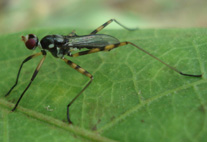Abstract
This paper describes a new Frontonia ciliate, F. paramagna spec. nov., sampled from freshwater in Harbin, northeast China, based on its morphology, infraciliature, ultrastructure and small subunit ribosomal RNA gene information. The new species is defined by the following features: large sized freshwater form, 400–610 × 110–160 μm in vivo, about 179–201 somatic kineties, three peniculi, each with four kineties, three vestibular and six or seven postoral kineties, one elongated-elliptical macronucleus, centrally-located, a single contractile vacuole, without canals, located right-dorsally in the posterior half of the body. Sequence alignment and phylogenetic analyses based on the small subunit ribosomal RNA (SSU rRNA) gene indicated that the new species has characters distinct from its known congeners. The ultrastructure of the trichocyst and other extrusomes, and the subpellicular fibre system, were observed by both scanning electron microscopy (SEM) and transmission electron microscopy (TEM). Much of the ultrastructure is here given for the first time by SEM, and these features provide complementary data for taxonomic purposes.

